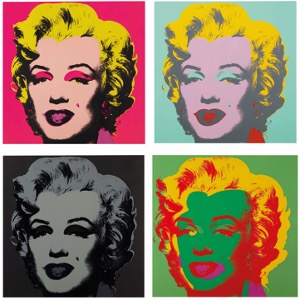Research & Projects

I am Professor in Computer Science at the Bordeaux INP / Enseirb-Matmeca engineering school, researcher at the LaBRI laboratory and head of the SCRIME (Studio de Création et de Recherche en Informatique et Musiques Expérimentales) in Bordeaux. My research interests include mathematical and machine learning models for computer-assisted music analysis, composition and interpretation.
Past positions :
- 2016 - 2023 : associate professor at Université de Lille, in the Algomus team of the CRIStAL laboratory.
- 2014 - 2016 : postdoc researcher in Music Informatics Group at the University of Basque Country in San Sebastian, Spain (Learning To Create EU project)
- 2010 - 2013 : Ph.D in Computer Science at IRCAM (French Institute for Research and Coordination in Acoustics/Music) and LACL, Université Paris-Est : Symbolic music representations and spatial computing.
Habilitation thesis
Guitar tablature modelling

I am the coordinator of the French ANR TABASCO project, in which we are elaborating computational tools to assist the composition and writing of guitar music, in collaboration with B. Bacot, K. Deguernel, A. D'Hooge, B. Navarret and the Arobas Music company. This project involves the design of encoding tools dedicated to tablatures, satistical studies on cross-style guitar copora (DLfM paper) and musical function identification (ISMIR paper).
Music and NLP

NLP principles (Natural Language Processing) are often transposed in the musical domain to improve a variety of MIR tasks. In collaboration with Mikaela Keller and Dinh-Viet-Toan Le, this project aims at studying the suitability, the performance and the limits of NLP models applied to symbolic musical data. Our NLP4MuSA paper aims at studying the self-attention mechanism on musical data. This project is supported by a bilateral funding (PHC) with Dorien Herremans at Singapore University of Technology and Design.
Texture modelling in piano music

In musical scores, melody and chords can be realized through a variety of textures, which can be defined as the way notes and voices are organized. Texture strongly relates to musical style. In collaboration with Louis Couturier and Florence Levé, this project aims at modelling texture in the classical piano repertoire, with applications in computational musicology and style transfer. Our work includes the elaboration of a syntax dedicated to the description of texture as well as the production of a dataset with bar level texture annotation.
AI Song Contest (2020)

In the AI Song Contest teams of musicians, artists, scientists and developers take on the challenge of creating a new Eurovision-like hit with the help of artificial intelligence. Check out our song I Keep Counting created in collaboration with Florence Levé, Richard Groult, Mathieu Giraud and Gianluca Micchi and interpreted by our guest singer Niam. We got the 4th place on 13 teams. More details on our submission on this page and in our TISMIR paper. Here's the link to the VPRO page where you can listen to the 13 songs and evaluate them.
High level structure modelisation in classical music

Is a computer able to detect the high level structure of a classical musical piece ? The Algomus team is working on the modelization of the sonata form with Hidden Markov Models in which observations correspond to musical features automatcially computed from musical scores, more details in our TISMIR paper. Part of the PhD work of Laurent Feisthauer, extraction of musicology-driven selected features also enables the detection of structure-contributing local phenomenas such as authentic/half cadences (paper) as well as more specific structural breaks (paper) and key modulations (paper) with rules-based approaches and machine-learning algorithms like SVMs and recurrent neural networks.
Spatial representations of music

Spatial representations of musical objects and relationships enable intuitive understanding of different musical principles such as chord interval content of pitch transformations. Following this idea, discrete pitch-class spaces inspired by the Tonnetz provide original appraoches in music theory, analysis and composition. The software HexaChord implements a number of functionnalities to manipulate MIDI streams (coming from a MIDI file or in live from any MIDI device) in different pitch-class spaces. Recent advances in this project highlight some links with persistent homology applied to simplicial complexes representing collections of pitch-class sets. More details on our CMJ paper.
Harmonic structures in trance music

An original study in collaboration with Kat Agres, Dorien Herremans and Darrell Conklin on the impact of harmonic repetition on the enjoyment of Uplifting Trance music. The implementation of a transformation process connected to the digital audio workstation Logic Pro X enabled the automatic generation of a variety of high quality audio musical excerpts with different harmonic content. A corpus of 100 anthem chord loops manually transcribed from uplifting trance mixes was built for this study. The paper is available here and the corpus here.
Generation of constrained microtonal all-interval series

An artistic collaboration with french composer Stéphane de Gérando using the idea of All-Interval series with additional constraints regarding micro-intervals and melodic contour. This work reached to the ellaboration of two musical pieces Tempus Est and Le chant des STISMIS.
PaperTonnetz

PaperTonnetz is a tool developped in collaboration with Jérémie Garcia that lets musicians explore and compose music with Tonnetz representations by making gestures on interactive paper. In addition to triggering musical notes with the pen as a button-based interface, the drawn gestures become interactive paths that can be used as chords or melodies to support composition. See a video.
Awards
- Best Paper Award ICMC/SMC 2014 - "Spatial Transformations in Simplicial Chord Spaces" (Louis Bigo, Daniele Ghisi, Antoine Spicher, Moreno Andreatta)
- Prize young researcher 2013 in science and music, organized by IRISA and sponsored by AFIM and Fondation Rennes 1.
